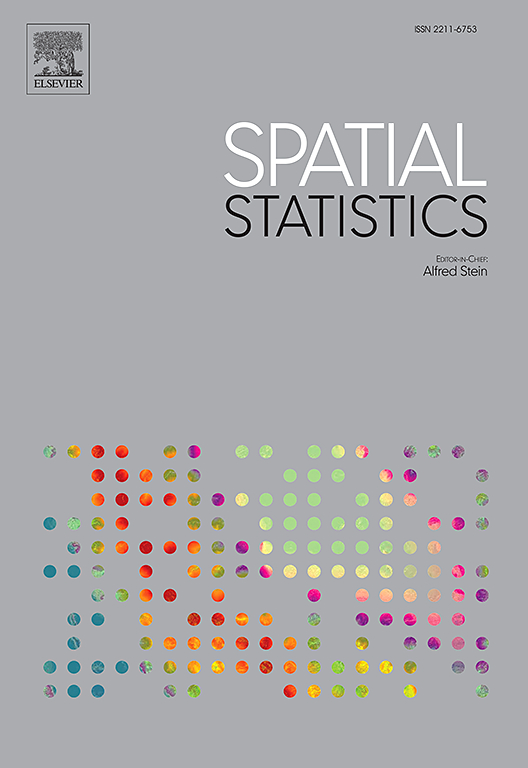空间点模式的各向同性测试:错误规范下的非参数与参数复制
IF 2.1
2区 数学
Q3 GEOSCIENCES, MULTIDISCIPLINARY
引用次数: 0
摘要
为了验证空间点图的各向同性假设,提出了几种假设检验方法。大多数这些方法的特点是在各向同性的零假设下检验统计量的未知分布。逼近分布的参数化方法包括从用户指定的各向同性模型模拟模式。另外,可以使用各向同性下检验统计量的非参数重复来免除指定模型的需要。在本文中,我们首先提出了一个一般框架,该框架允许将选择的非参数复制方法集成到各向同性测试中。然后,我们进行了一个大型模拟研究,包括类似应用程序的场景,以评估不同参数和非参数复制方法的测试性能。特别地,我们探讨了由模型规格错误引起的测试尺寸和功率的扭曲,并展示了在这种情况下非参数复制的优势。本文章由计算机程序翻译,如有差异,请以英文原文为准。
Isotropy testing in spatial point patterns: nonparametric versus parametric replication under misspecification
Several hypothesis testing methods have been proposed to validate the assumption of isotropy in spatial point patterns. A majority of these methods are characterised by an unknown distribution of the test statistic under the null hypothesis of isotropy. Parametric approaches to approximating the distribution involve simulation of patterns from a user-specified isotropic model. Alternatively, nonparametric replicates of the test statistic under isotropy can be used to waive the need for specifying a model. In this paper, we first present a general framework which allows for the integration of a selected nonparametric replication method into isotropy testing. We then conduct a large simulation study comprising application-like scenarios to assess the performance of tests with different parametric and nonparametric replication methods. In particular, we explore distortions in test size and power caused by model misspecification, and demonstrate the advantages of nonparametric replication in such scenarios.
求助全文
通过发布文献求助,成功后即可免费获取论文全文。
去求助
来源期刊

Spatial Statistics
GEOSCIENCES, MULTIDISCIPLINARY-MATHEMATICS, INTERDISCIPLINARY APPLICATIONS
CiteScore
4.00
自引率
21.70%
发文量
89
审稿时长
55 days
期刊介绍:
Spatial Statistics publishes articles on the theory and application of spatial and spatio-temporal statistics. It favours manuscripts that present theory generated by new applications, or in which new theory is applied to an important practical case. A purely theoretical study will only rarely be accepted. Pure case studies without methodological development are not acceptable for publication.
Spatial statistics concerns the quantitative analysis of spatial and spatio-temporal data, including their statistical dependencies, accuracy and uncertainties. Methodology for spatial statistics is typically found in probability theory, stochastic modelling and mathematical statistics as well as in information science. Spatial statistics is used in mapping, assessing spatial data quality, sampling design optimisation, modelling of dependence structures, and drawing of valid inference from a limited set of spatio-temporal data.
 求助内容:
求助内容: 应助结果提醒方式:
应助结果提醒方式:


